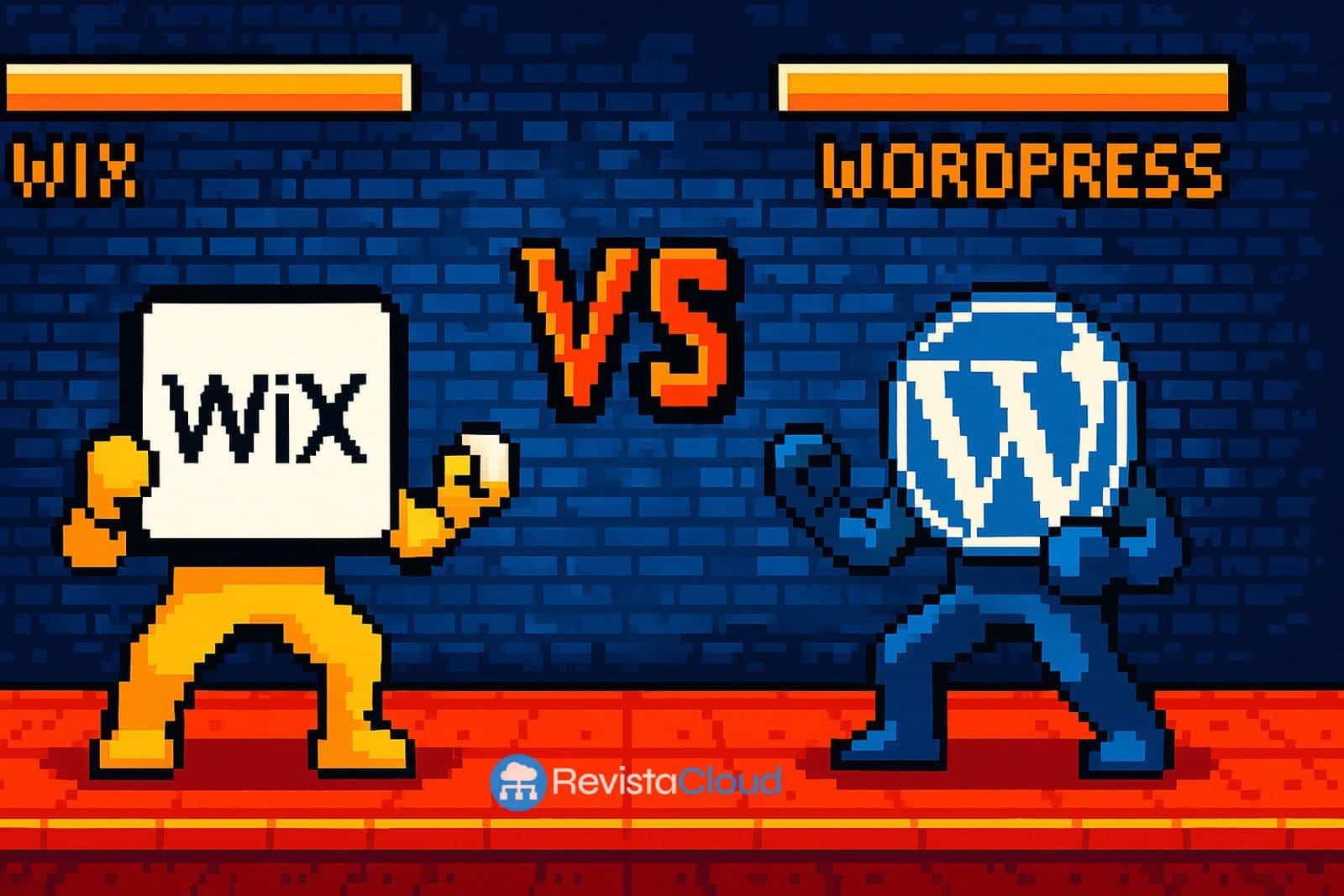In today’s digital ecosystem, the choice of platform for building and managing a website is not just a matter of design or ease of use: it also involves making strategic decisions about technological freedom, scalability, and control over infrastructure. In this context, Wix and WordPress represent two opposing visions of web development: closed simplicity versus open flexibility.
This analysis, aimed at cloud industry professionals, explores the main differences between both platforms, with a particular focus on their relationship with infrastructure and deployment in cloud environments.
Wix: Closed Simplicity in Another Cloud
Wix offers a closed SaaS solution that provides all the necessary tools to create a website quickly and without technical knowledge. Everything is integrated: the visual editor, hosting, domain, and maintenance.
Advantages:
- Agile and accessible creation process.
- Modern design templates.
- Infrastructure managed by Wix: users do not have to worry about servers, security, or updates.
Limitations:
- No access to code or infrastructure.
- No option to deploy the site elsewhere or with another provider.
- Complicated migration if the platform needs to be abandoned.
- Less control over performance and technical SEO.
WordPress: Freedom and Control in Any Cloud
WordPress.org, on the other hand, is an open-source content management system (CMS) that can be deployed in virtually any environment. From a local server without internet connection to public or private cloud infrastructures, shared hosting, VPS, or dedicated servers.
Advantages:
- Installable in any environment: does not depend on specific infrastructure.
- Full access to source code: allows for advanced customizations and tailored developments.
- Unmatched ecosystem of plugins and themes.
- Advanced SEO thanks to tools like Yoast or Rank Math.
- Ideal for the cloud: can scale horizontally and vertically based on demand.
Considerations:
- Requires technical knowledge for optimal setup and maintenance.
- Users must manage security, updates, and backups.
- Performance depends on the infrastructure provider and the quality of the chosen stack.
Technical Comparison from the Cloud Perspective
| Feature | Wix | WordPress.org |
|---|---|---|
| Platform Type | Closed SaaS | Self-managed open-source software |
| Access to Infrastructure | No | Full: from localhost to multi-cloud |
| Scalability | Limited to Wix platform | Unlimited, based on contracted infrastructure |
| Control over Data and Backups | Limited | Total, based on configuration |
| Deployment Flexibility | None | Total (local, hybrid, public, or private environments) |
| Cloud Compatibility | Only with Wix cloud | Compatible with any cloud provider |
WordPress and the European Cloud: The Case of Stackscale
The ability to deploy WordPress in any environment makes this CMS an especially attractive solution for companies seeking technological sovereignty and control over their data. In this sense, European providers like Stackscale (Grupo Aire), specialized in high-performance cloud and bare-metal infrastructure, offer a robust and secure alternative for hosting WordPress projects with complete freedom, while also complying with the regulatory requirements of the European space.
Stackscale allows for deploying WordPress in private, hybrid, or dedicated cloud environments, with options for high availability, replicated storage, and specialized technical support. For organizations that value control over their data and want to avoid dependency on external tech giants, this presents a strategic option to consider.
Conclusion: Freedom, Control, and Cloud Go Hand in Hand with WordPress
Wix can be a valid solution for those who prioritize immediacy and do not need technical customizations or control over the infrastructure. However, for projects that demand scalability, interoperability, and technological freedom, WordPress is the winning option.
In a context where digital sovereignty and cloud infrastructure are becoming increasingly prominent, choosing an open platform like WordPress and hosting it in controlled environments—such as those offered by Stackscale in Europe—is a clear commitment to autonomy, efficiency, and technological sustainability.

